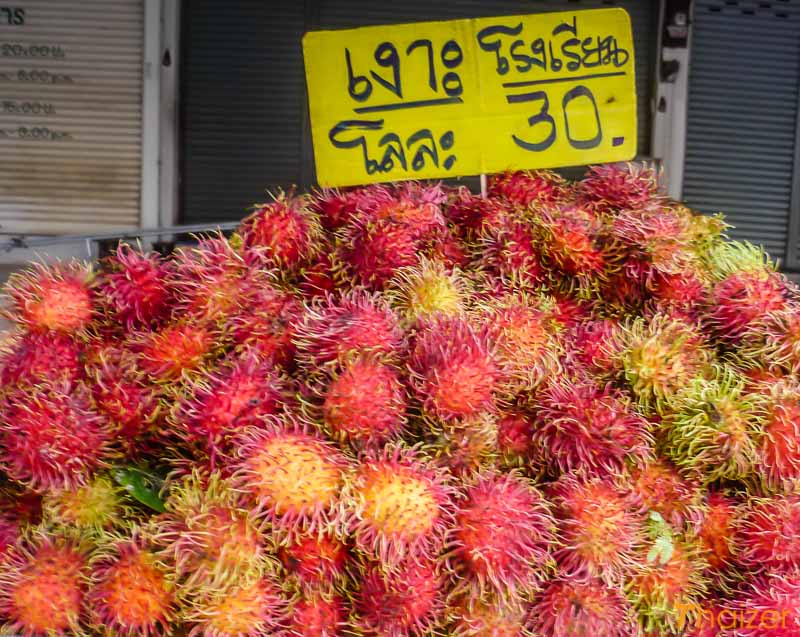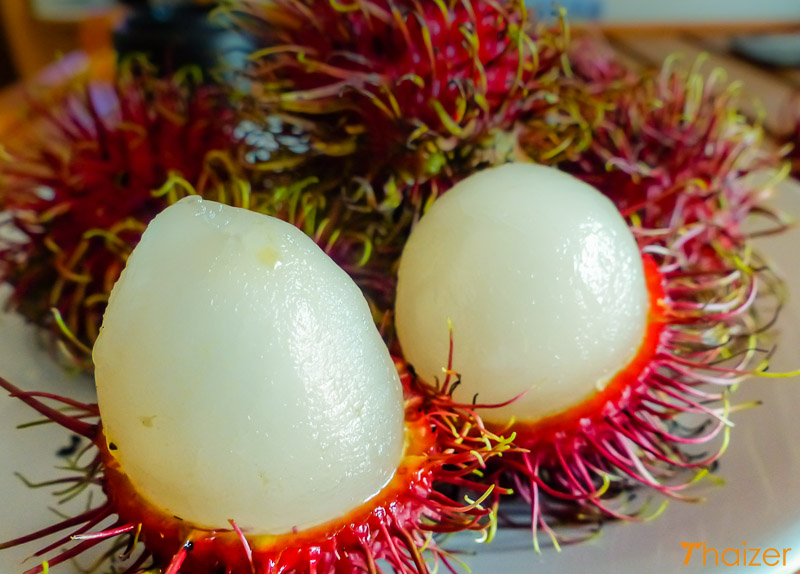It might look peculiar, but the hairy red exterior of the rambutan hides a succulent, sweet fruit which is rich in vitamin C. Known in Thai as ngaw, the taste of the rambutan is sometimes compared to grapes with the flesh of the fruit translucent white or pink in colour depending on the variety. In Thailand, the rambutan season runs from June/July to September with a one kilo bag of the fruit costing around 30 or 40 Baht from street vendors.

The word rambutan comes from the Malay/Indonesian word ‘rambut’ which means ‘hair’.

If you’ve not tried rambutans before, they can be opened with your fingers but it’s usually easier, and less messy, to get to the fruit by using a knife to cut through the skin. Eat the flesh, but don’t eat the stone or shell. When buying rambutans, look for those with a good covering of red skin. Green skins means they have yet to ripen fully whilst rambutans that are over-ripe tend to have too many black hairs instead of green/red hairs.